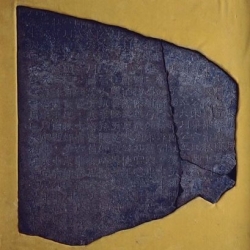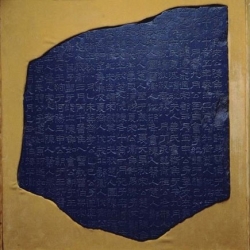|
Fragment of Stele, Inscribed with Xiping Classics |
|
Tags: Confucianism | Han dynasty | stele
The tablet of Xiping is also called “the tablet of Han”, or “the tablet of unity”, depending on whether you translate it by sound or by meaning. It was begun in the fourth year of Xiping, during the reign of the Emperor Lin of East Han, in 175 AD, and it took fourteen years to finish, with a total of forty-six pieces.The Han promoted the teachings of Confucius. Normally it was taught orally and through hand-written texts, causing quite a few errors. By the fourth year of Xiping the Emperor Lin of East Han, Confucian scholars had corrected the articles, and also engraved them in stone for the Students of Confucianism who came from everywhere to study and write. The tablets of Xiping was taken very seriously by officials everywhere. Thousands of people came to consult the tablets, so many that the streets were blocked. However, at the end of the East Han, as a result of the Dongzhuo riot, the palace of Luoyang was destroyed, and most of the tablets were destroyed with it.The two remnants from the “Book of Gongyiang” you are looking at now were unearthed from the Imperial College of East Han in 1934. It is the largest remnant of the Xiping tablets that exists in the world, and the best representation of the tablets that have been unearthed over thousands of years. The script of the tablets are handsome and powerful; the classic style of the Han dynasty can be seen.

|

|
National Museum of History
|














